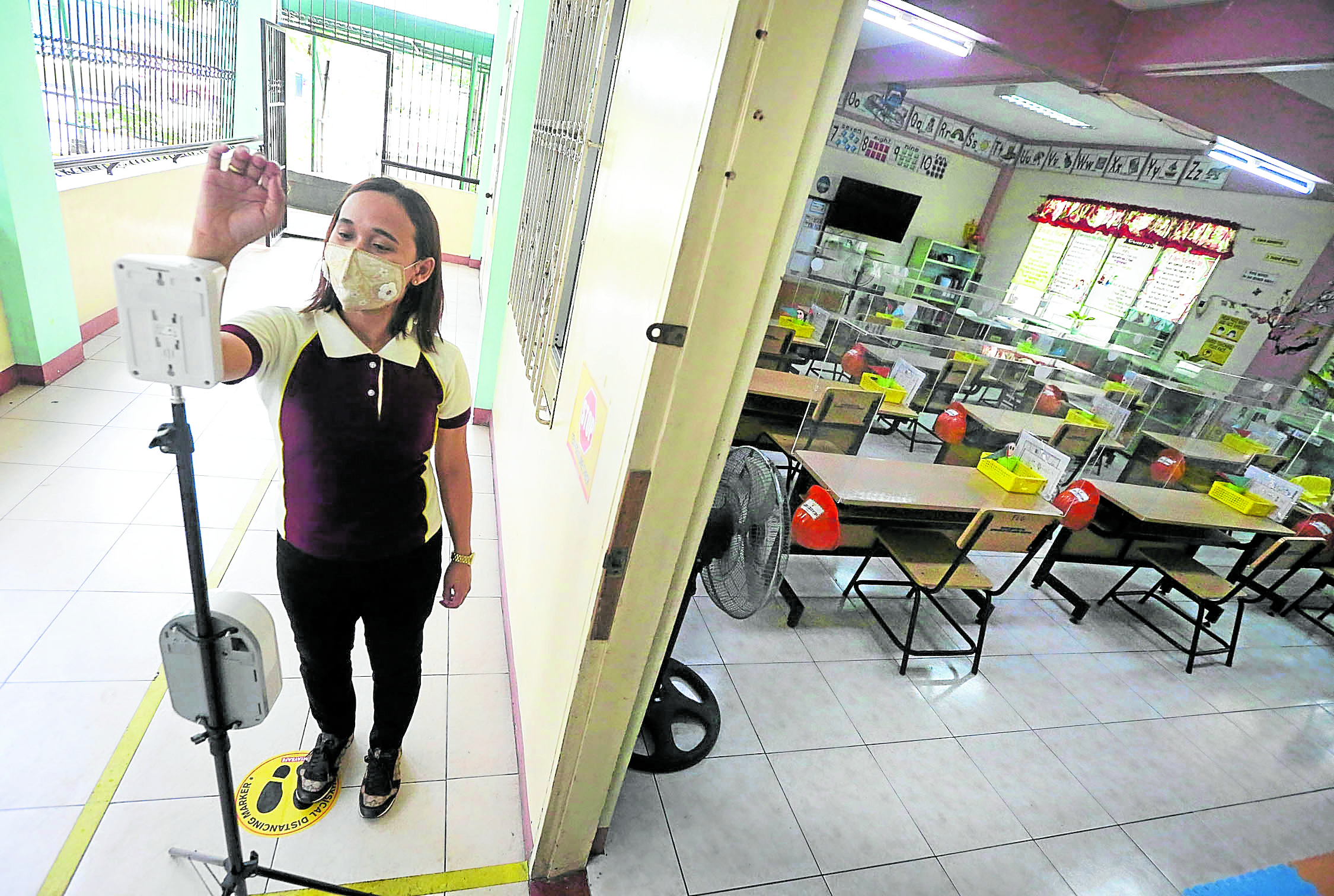
FILE PHOTO: Grade school teachers of Aurora Quezon Elementary school in Manila demonstrate how a face to face class would look like amid the pandemic, with plastic barriers separating each armchair from one another and teachers wearing PPE during class. INQUIRER /MARIANNE BERMUDEZ
Some 6,000 schools in the country are ready to hold in-person classes once restrictions in their areas are relaxed, a top Department of Education (DepEd) official said on Friday.
DepEd Undersecretary Nepomuceno Malaluan said the implementation of in-person classes was now in its progressive expansion in areas under alert level 2 such as Metro Manila, Batanes, Bulacan, Rizal, Cavite, Southern Leyte and Biliran.
This followed the successful implementation of the pilot program that increased stakeholders’ confidence in allowing children back into the classrooms, Malaluan said.
More schools are now ready to join the program, he said.
“If we talk about the schools in the entire country that are ready once they are under alert level 2, the report of our regional directors is we have more than 6,000 schools that are ready to join the expanded phase, and this will be increasing, as long as they comply with the school safety assessment,” he said at the Laging Handa briefing.
He said schools in alert level 2 areas had chosen different dates for resuming classes, as some have timed it to coincide with the third quarter of their school calendar.
He also said that while the pilot implementation of in-person classes was limited to kindergarten to grade three and senior high school, all grade levels could participate under this progressive expansion phase.
It would still depend on the capacity of the schools and the availability of classrooms, he said.
“But as much as possible, included in our framework is equity in access to the [in-person] classes, that everybody would be given a chance,” he added.
Malaluan also said the in-person classes during the expansion phase would be for half a day.
He said there was feedback during the pilot implementation that three to four hours of class in a day was not enough, but Education Secretary Leonor Briones does not want students eating lunch in school to minimize exposure.
The DepEd would have to discuss with the Department of Health (DOH) any proposal to increase classroom hours as allowing students to eat lunch in school would increase the health protocols that would have to be observed, he said.
It would also increase the risk assessment, he added.
“That will have to be closely coordinated with the [DOH] and then it’s a public health aspect of the expansion phase and our standing arrangement with the DOH is we are guided by the DOH with respect to health standards,” he said.